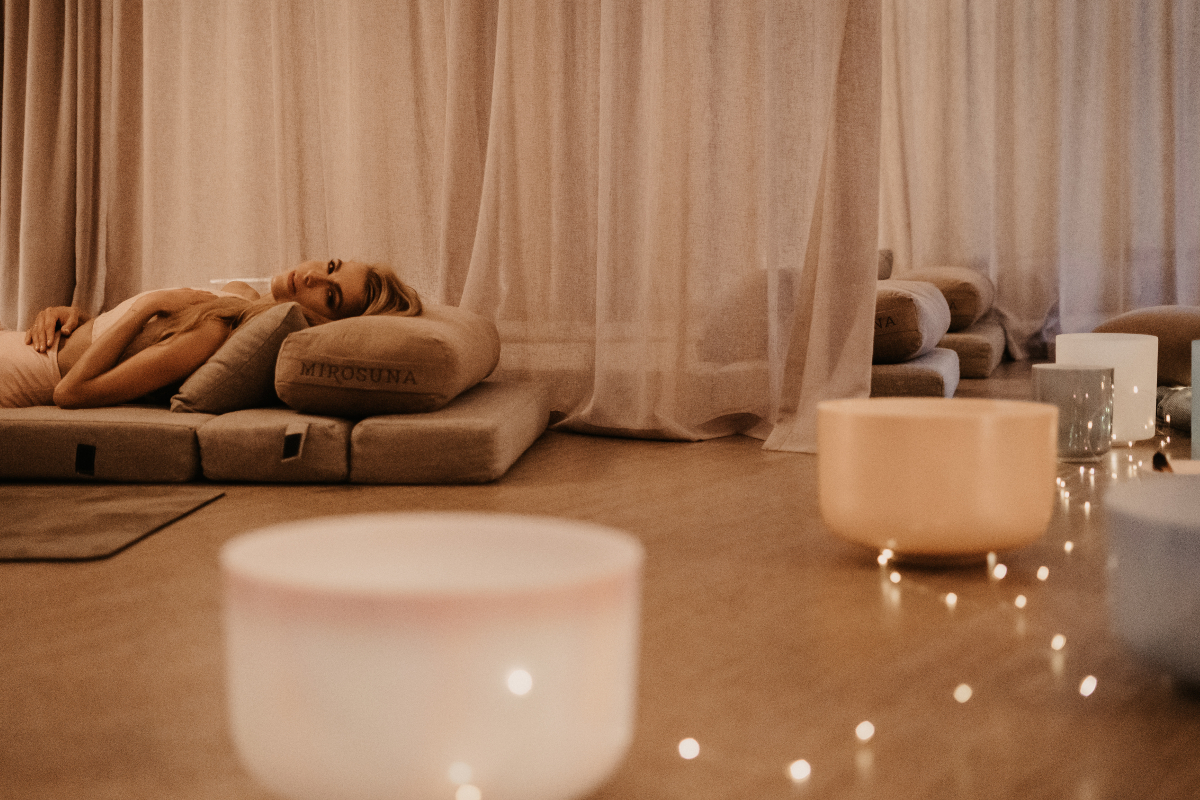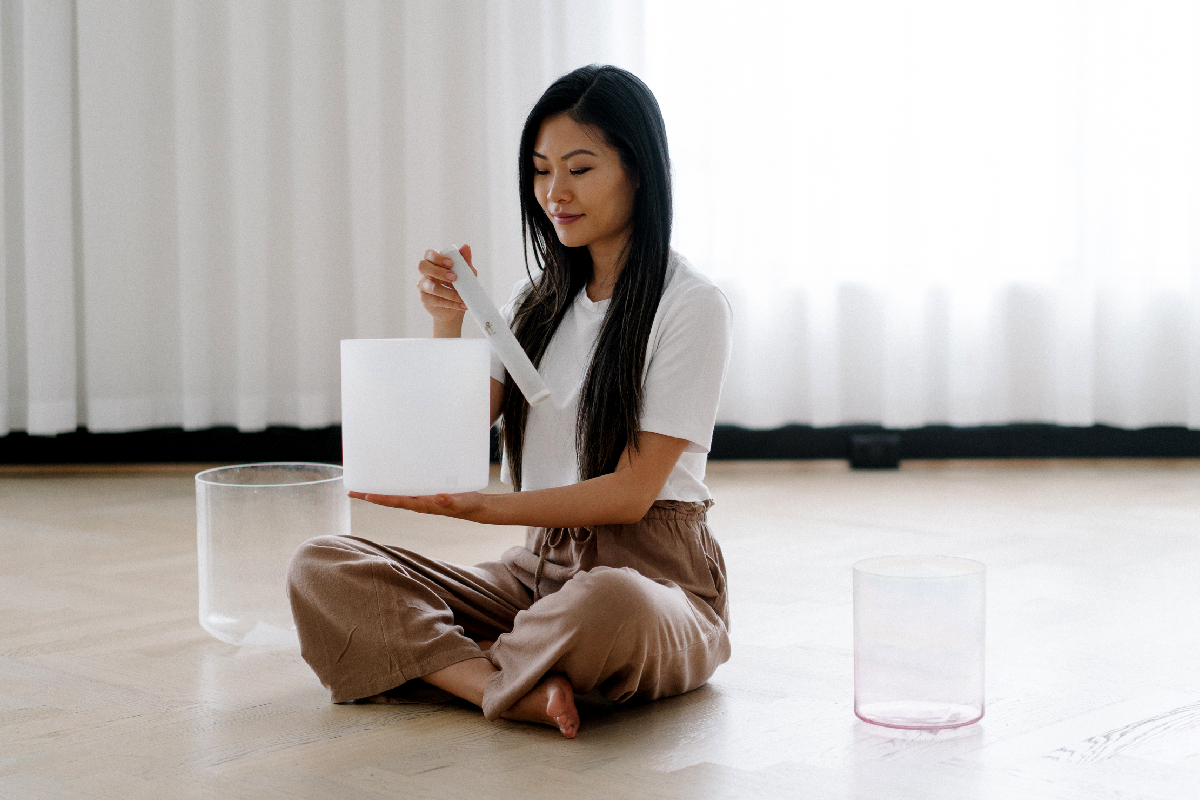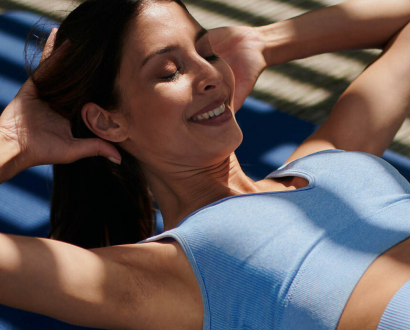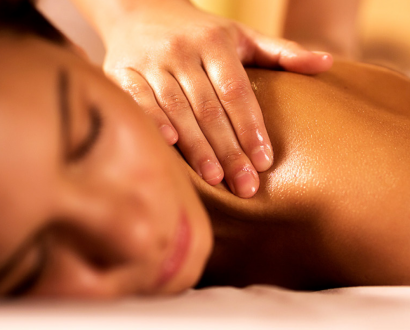In a world of constant notifications, endless to-do lists, noisy traffic, and a general sense of urgency washing over everything you do, it can be daunting to simply ‘be’ – be in the moment, be at ease, be happy. If you’re struggling to make your next career jump, feeling stressed or perhaps plain worn out from the (almost) two years of lockdowns, exploring meditation for beginners could be just what you need.
Exhausted from a busy corporate tech career, Sally Kellett left her executive role and moved to Truc Lam Monastery – a Zen Buddhist Monastery in Vietnam – to live with the nuns and find her true purpose through meditation.
Every day the nuns and monks wake at 3am to spend their 19-hour long day doing chores, including sweeping fallen tree leaves in silence for five and a half hours, and meditating, eating, chanting and being mindful “every single minute of the day”.
“Meditation is literally life-changing because your life is changing every time you meditate,” Sally tells The CEO Magazine. “You hone your skills and strengthen and focus your mind instead of falling asleep or always thinking about other things. You’re changing and getting stronger every time.”
Through studying the eastern methods, Sally developed a deeper understanding for mindfulness and meditation.
“One of my nun friends said to me ‘cleaning the house is cleaning the mind’ – and I love that,” she shares. “Western society makes you feel like meditation has to be you sitting alone with yourself. But when I was at the Buddhist monastery, active meditations were a huge part of their day.”
Bringing her learnings back to the western world, Sally founded Mirosuna – a wellbeing hub and mindfulness studio so that busy professionals can recharge with her guided classes, including meditation for beginners.
“I come from the corporate industry where people are relentlessly pursuing pay rises, new titles or climbing the corporate ladder. They’re willing to do so much to get those things, but to me it’s a pursuit born out of ego and fear,” she explains. “The nuns and monks, their pursuit is so much deeper than that and it really inspires me.
“This path they pursue is leading them to so much happiness … they live so happily with so little and so simply. I just love it. Everything we stress about in this world we live in, they don’t stress about and can live very fulfilling lives.”
Specialising in sound meditation, the practitioner helps elevate the lives of others so they can create space for change, happiness and a more meaningful life – all without the “woo woo”.
“When one person practises meditation, it gives them a stillness that is almost unshakable,” she shares. “Meditation helps us find our way.”
Ultimate guide: Meditation for beginners

What is meditation?
Meditation is a practice used for people to achieve mental clarity and an emotionally calm and stable state.
“Mindfulness and meditation leads you to your true self but also to a true path of eudaimonic happiness. That’s the nugget so many people are chasing but have no idea they’re chasing it,” Sally says.
When was meditation first discovered?
Historians believe the earliest forms of meditation were used in Vedic or Hindu schools in India in about 1500 BC.
Types of meditation
- Zen meditation
- Mantra meditation
- Transcendental meditation
- Yoga meditation
- Chakra meditation
- Vipassana meditation
- Qigong meditation
- Sound meditation
- Relaxation meditation
- Visualisation meditation
What does a successful meditation for beginners look like?
“Completely honour and accept your experience, no matter what experience that is – receive it wholeheartedly and non-judgmentally,” Sally says. “Every meditation is different. A successful meditation is one that the meditator acknowledges, honours and derives a learning from their experience, no matter what it might be.”
What if you can’t think about nothing?
“A lot of people say they can’t close their eyes and think about nothing,” she says. “I would say that, in itself, is a very successful meditation because that person was so aware of the fact that they couldn’t still their mind, it’s actually their body telling them they’re probably very stressed, overwhelmed or anxious at this point in their lives.
“And that is a win because your meditation helps you connect to your true self, which has told you how you actually are in your state of health right now.”
Forms of guided meditation for beginners
Guided meditation allows the meditator to use several different sources and techniques to guide or enhance their journey.
Different forms consist of online courses, videos, apps, music, imagery and in person with a practitioner – just like Sally.
“A lot of meditations out there on apps are guided meditations, but they don’t teach you the technique, and without the technique it’s really hard to follow a guided meditation,” she explains. “Mirosuna’s philosophy is all about education – teaching people how to do the actual steps.
“Honestly, take the shortcut and go straight to a practitioner and your life will be so much easier –you won’t have to spend 10 years trying to figure it out like I did.”
Benefits of meditation
Physical: meditation reduces stress, anxiety, depression and pain while enhancing peace, perception and wellbeing.
Mental: “Meditation gives you that safe space to explore, rediscover and reconnect to your voice and intuition – that true self that lies among you when it’s hidden in this world full of noise and stress and busyness,” Sally explains.
Where does a beginner start?
“We’re not trying to silence our mind – as a beginner we’re actually trying to become aware of it and listen to it without becoming attached to it. That’s very important,” she shares. “Listening to our mind, becoming aware of it and not judging our thoughts, and then not attaching to our thoughts or ego – that’s where a beginner starts.”
How do you meditate successfully?
“When you’re going for a walk, washing the dishes, showering, taking a bath – to practise meditation is to focus on that one task and be in that moment,” Sally explains. “And try to do that for longer and longer every time.”
Meditation for beginners: How long is enough?
“I don’t really believe in the 10 minutes of meditation a day,” Sally says. “I think it’s great if you can do it, but I don’t think it’s the be-all-and-end-all.
“How long you should meditate really depends on how long your brain and mind can tolerate it for – sometimes it’s literally 10 seconds. Sometimes that 10 seconds becomes 20, and that becomes 30, and that becomes one minute and over time that one minute becomes longer and longer.
“However long you can maintain that focus for before your mind starts to get back to your to-do list is long enough.”
Meditation for beginners: Golden steps to follow

-
- Go easy on your expectations
“Don’t necessarily try and dedicate yourself to 10 minutes of meditation every day,” the expert shares. “Even though that theoretically sounds easy, it’s actually very hard for busy people to do, especially if they’re new to meditation.”
-
- Find a coach
“Do it with someone, it makes a huge difference,” she says. “Working with someone who knows what they’re doing and can physically see you and guide you means they can really tailor the meditation to you and give you recommendations that are very specific to what’s going to work for you.”
-
- Accept noise
“It’s important to avoid distractions where possible, but also accept that life will always be full of distractions and noises. You should always avoid your own desire and attachment to wanting to find the quietest place on earth – nowhere is dead quiet in your everyday life.”
-
- Anchor yourself to success
“Creating visual, kinaesthetic and multisensory anchors where you create an environment to be able to trigger your brain into relaxation and meditation,” Sally shares.
Multisensory anchors can include using an essential oil, burning a palo santo stick, writing in a journal, lighting candles or even drinking a calming dried white chrysanthemum tea.
-
- Weave meditation into everyday activities
“When you go on a walk, turn it into meditation by turning off your phone, looking at nature, being completely in that moment,” she says. “Tie meditation into an existing activity you already do. It could be showering – turn the water so it’s not gushing down (because that, in itself, can be very subconsciously stressful) and try to enjoy the moment and feel the water on your back. Even brushing your teeth – brush them slowly, accept that there’s no rush and enjoy these small activities of self-care.
“When you’re doing this, think of one thing that happened during your day. Not a bad thing – something that brings you joy – and dive a little deeper into that moment. Consider how you reacted, what you said, what lessons you derived from it, how you made that person feel, which will anchor your thoughts on something simple.”
What should you avoid during meditation?
While Sally doesn’t like putting rules in place, she does suggest avoiding some things to ensure you get the most out of your meditative experience.
- Uncomfortable positions – you can sit, stand, walk or even lay down to meditate
- Eliminate distractions – do away with phone notifications, alarms
- Ignore frustrations – just because you can’t relax doesn’t mean it’s a failed meditation. Embrace the experience and accept it
How can meditation help executives with their busy lives?
“Business executives come across a lot of big challenges every day – it’s very stressful,” Sally says. “Execs do it well because they’ve had years of training and practice, but the thing is, our human body was not built to deal with copious amounts of stress and to give up all of our time to work non-stop.
“Traditionally, execs are praised for how hard they work and forget that taking time out is productive in itself.
“Meditation not only helps a busy exec learn how to relax, it also helps them to calmly ride out their busy life and deal with all of their stresses and all of the pressure and timelines like a boss.”
Is mindfulness the same as meditation?
“They’re completely different things,” Sally says. “Think about mindfulness as the way you live your life, your philosophy, the teachings and lessons that you live by, your ethics, your morals, all these ideas are things that guide you to be a better person.
“Meditation is what helps you get there. Meditation is like going to the gym and lifting weights for a solid hour. You’re training that muscle.
“Meditation doesn’t make you a good person. It’s how you live your life mindfully all the other hours of the day that determines how you live – whether it’s happy, fulfilling or empty and full of stress and worries.”
What is the biggest misconception about meditation?
“One of the biggest misconceptions about meditation, in the way the western world views it, is that you need to sit down, cross your legs, keep your eyes shut and think about nothing, or just focus on your breath,” Sally says.







